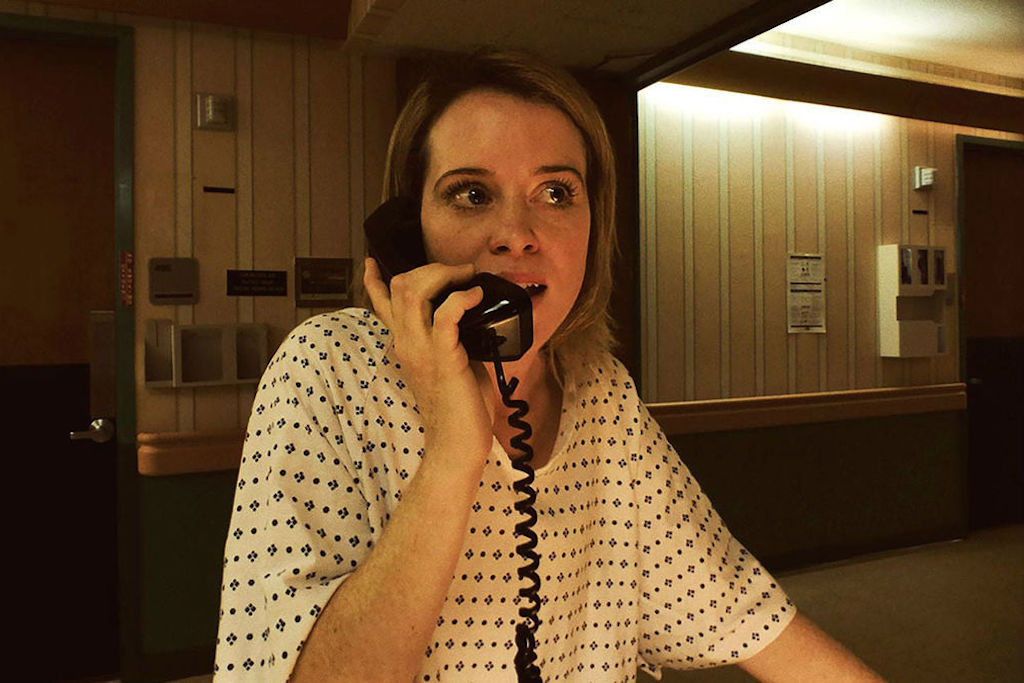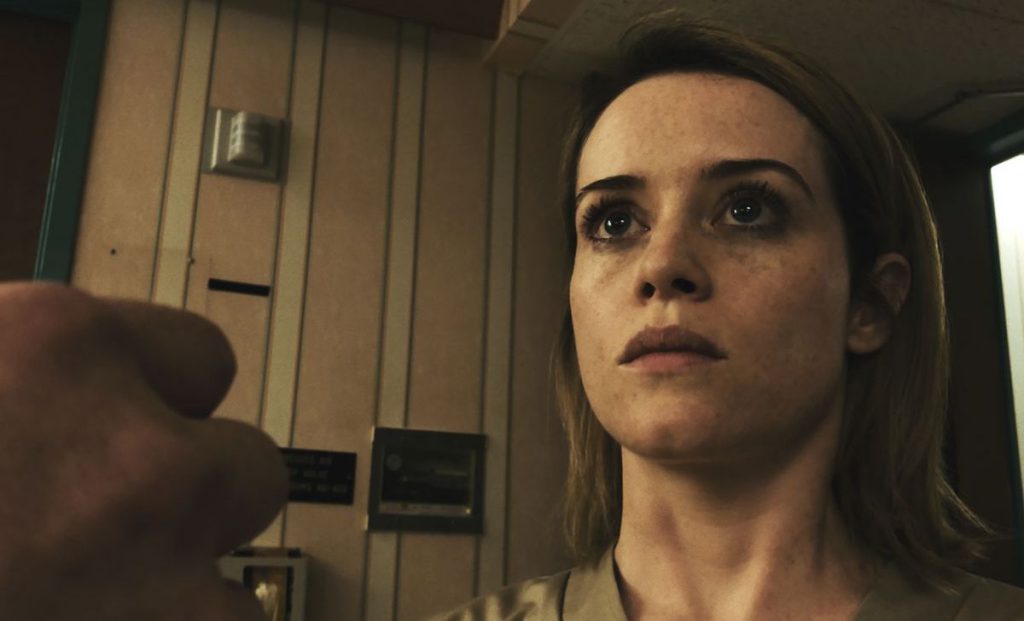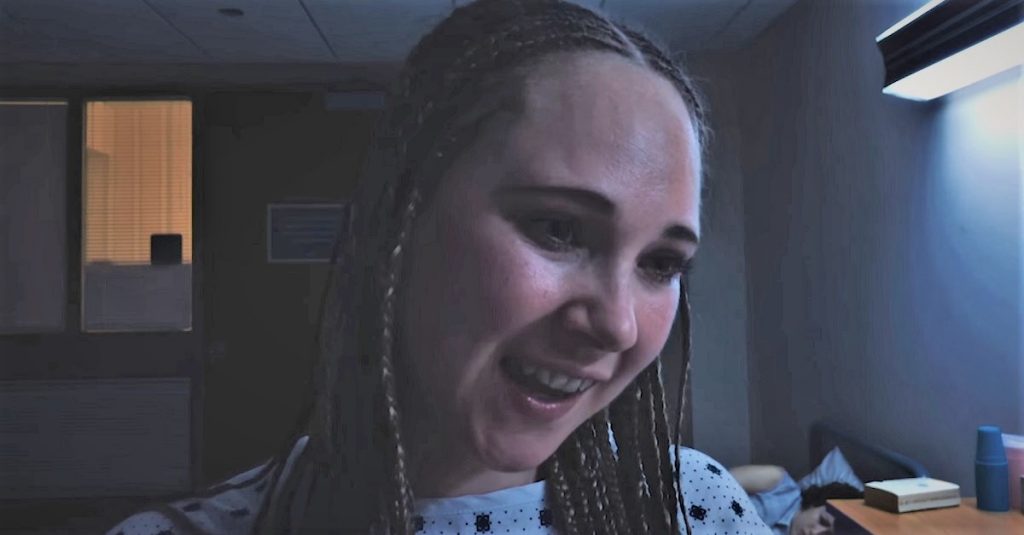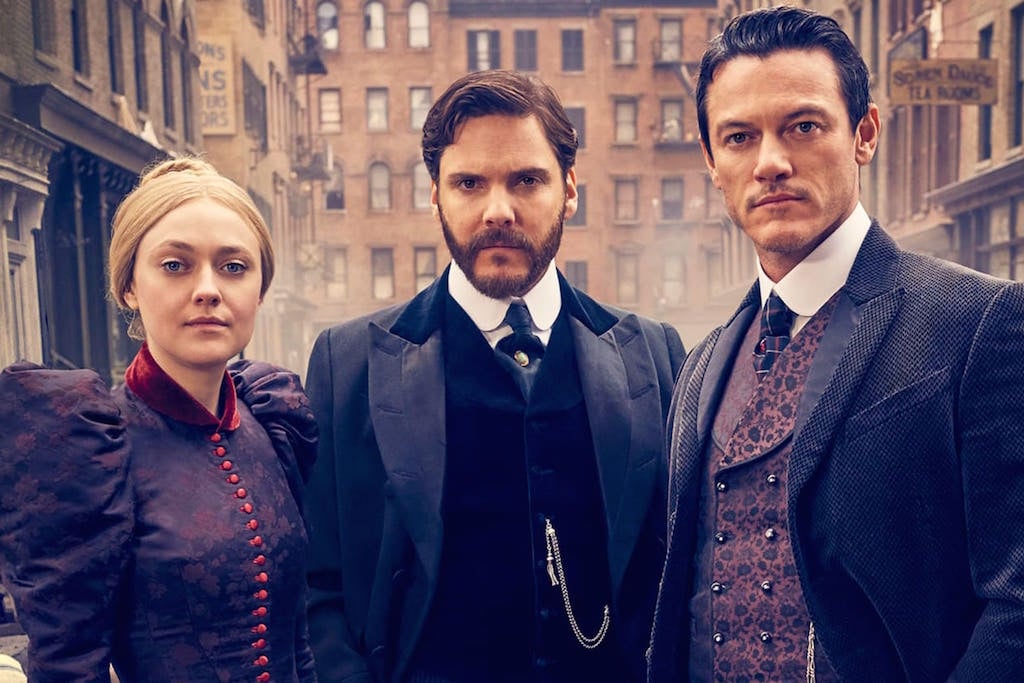‘Unsane’ Is A Thriller With Something To Say About The Mental Health Care System
Did we mention it's shot entirely on an iPhone 7?

There’s a painful element of truth about the realities of being a woman in Unsane.
The Crown’s Claire Foy stars as Sawyer Valentini, a data analyst who recently moved 600 kilometres from her home in order to escape her stalker. She decides to seek the help of a psychiatrist and accidentally admits herself to a mental hospital — once under observation, Sawyer starts to think she may actually be losing her mind. But when a new doctor arrives on the ward, she is adamant he is the stalker she had fled.
Teaming up with an undercover journalist (SNL’s Jay Pharoah), she seeks to reveal not just the injustices of the American health system, but also the dangers of toxic masculinity and the “nice guy” syndrome.
Unsane is Steven Soderbergh’s latest film since he “retired” in 2013, a thriller with the heart of a classic B-movie. It’s also a film that tackles mental health, stalking, and sexual harassment — themes that are used as the building blocks for a slice of pulpy goodness.
It’s Entirely Shot On An iPhone 7
There is something delightfully deranged about releasing Unsane on the same weekend as Avengers: Infinity War. Soderbergh’s film isn’t just low-budget, he’s gone out of his way to make Unsane feel as separated from the traditional glossy Hollywood output as possible by filming the movie on an iPhone 7 Plus.
It’s an artistic choice that isn’t new — Sean Baker’s stunning Tangerine is still the best and highest-profile example of an iPhone-filmed movie, although a whole host of indie titles have gone there too. Whereas Tangerine’s iPhone production helped foster that film’s wild and street-smart energy, seeing Unsane through the lens of a smartphone allows the film to play with voyeurism and fear.
While Unsane never takes a first person point of view, the use of the iPhone allows Soderbergh (as always, acting as his own cinematographer) to really get into the fuzzy and exceedingly paranoid headspace of its lead character. Taking inspirations from places such as Italian giallo cinema, the smartphone experiment supersedes its occasionally rough-as-guts aesthetics and finds something truly beautiful.
It helps that Unsane looks like no other film at the multiplex, allowing it to feel unique at a time when too many American indie movies look like episodes of HD Netflix programming. It all culminates in a single freeze-frame over the end credits — a symbol of its lead character’s unending trauma — that you’ll either love or loathe.
But that is a running theme of Unsane: taking something counterintuitive and twisting it ever-so-delicately, so that in the end it makes total creative sense. The griminess that Soderbergh is able to forge goes a long way to making its thematic elements work — this story simply would not have worked to the extent that is does had it been made with the polish and the sheen of something from the Conjuring franchise.

The Mental Health Question
Which brings us to the meat of what has become the film’s major talking point. Even though it comes from a filmmaker of Steven Soderbergh’s pedigree, Unsane hasn’t been let off the hook for its representations of mental health.
Metro in the UK labelled it an “outdated exploitation of sexual harassment and mental illness”, while The Spectator quite amusingly headlined their review as “Unsensitive, Unhumane and Uncredible” and described it as “98 minutes of mansplaining”. Richard Taylor at the Huffington Post UK also suggested it was “just another film that fuels negative mental health stereotypes.”
The movie’s shlocky B-grade roots shouldn’t exempt it from these very real and important critiques — in fact, this is usually the arena one can find the most explicit sort of misogyny, homophobia and racism. But Soderbergh, ever the cinematic experimentalist who plays with tone and style from one project to the next, is very much using the conventions of a classic insane asylum picture to talk about how little society seems to understand it.
That Foy’s Sawyer has so little agency in the film is exactly the point. Nobody listens to her and nobody believes her (except her mother, naturally, played by Amy Irving in her first film in nearly a decade). She is treated awfully and is pitted against a fellow inmate who is, yes, perhaps somewhat over-characterised as “crazy” (played by Juno Temple in a braided wig that tells you everything you need to know about her character’s life circumstances). But even then, Soderbergh is showing how the very real variables in mental health are so often treated with the same brush (or pill, I suppose).

A look.
Even when Sawyer is overdosed on a drug and violently hallucinates, none of the staff believe she is the victim of a deliberate violation. When she is abducted and placed in a cell, her kidnapper notes that none of the staff will notice or care because her insurance has expired.
Soderbergh doesn’t have many nice things to say about the American health care system, in case you couldn’t tell.
The Genius Of Steven Soderbergh
In all of this, Foy is exceptional. Her American accent wavers on occasion, but that doesn’t stop her captivating as she unleashes her rage physically or internalises her fear and contempt, expressing it to the audience with little more than a bulge of the eyes.
Like he did with the similarly lo-fi and low-budget Bubble or The Girlfriend Experience, Soderbergh has taken some potentially very taboo subject matters and given them a formally inventive twist and provocative narrative shell. There were moments of Unsane that reminded me of Kristen Roupenian’s Cat Person, and the abhorrent treatment of women at the hands of entitled self-proclaimed “nice guys” it portrayed so startlingly, adding another layer of creepy to its curious horror blend.
With UNSANE the medium is the message. Messy, claustrophobic, frequently ugly film in which Soderbergh fashions an ever-tightening noose of dread that any woman who has had to endure even one moment of unwanted attention from a man will feel in the pit of their gut.
— Joanna Di Mattia (@JoannaDiMattia) April 20, 2018
Is Unsane contrived and unrealistic? Well, it’s not a documentary, and Steven Soderberg has always enjoyed pushing his stories to the edge of believability. It’s to his credit that he’s been able to take this potential landmine of a story and make it entirely relevant to 2018.
—
Glenn Dunks is a freelance writer from Melbourne. He also works as an editor and a film festival programmer while tweeting too much at @glenndunks.
